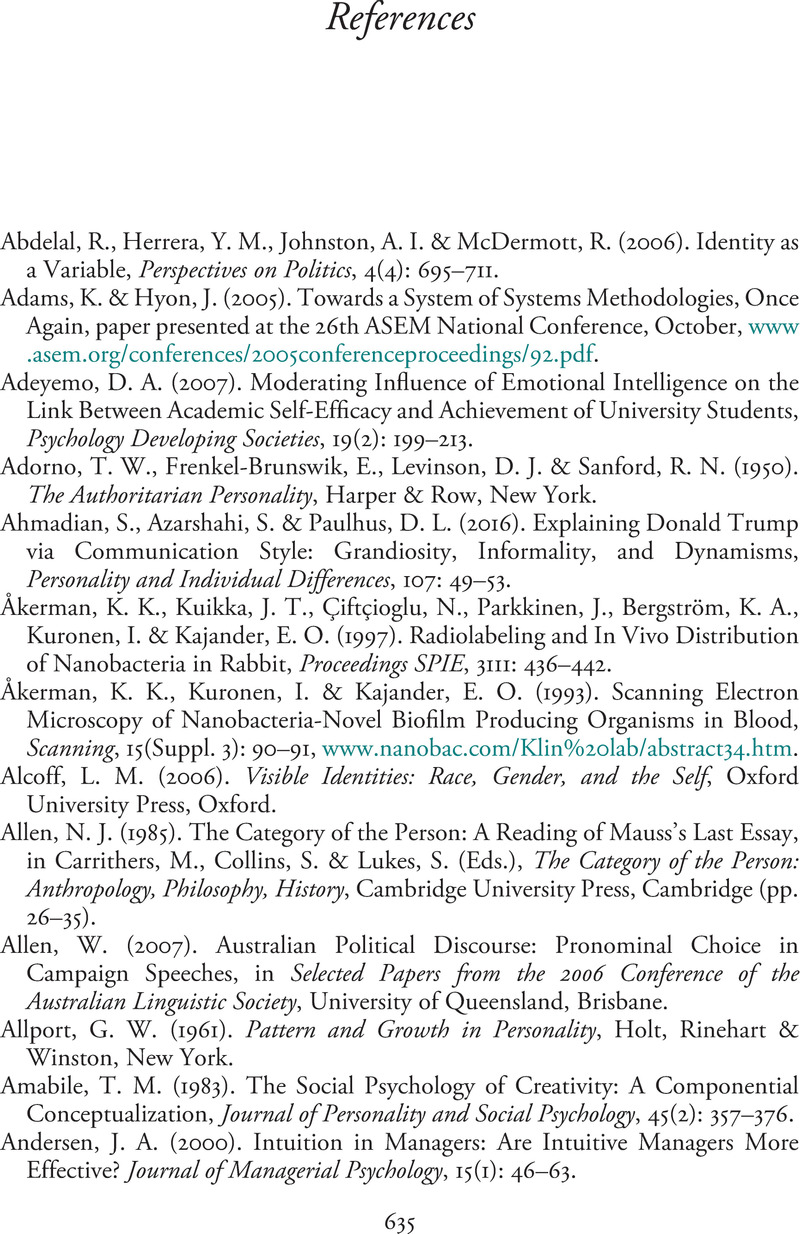 A Configuration Approach to Mindset Agency Theory
A Configuration Approach to Mindset Agency Theory Book contents
- A Configuration Approach to Mindset Agency Theory
- A Configuration Approach to Mindset Agency Theory
- Copyright page
- Contents
- Figures
- Tables
- Foreword
- Introduction
- Part I Cybernetic Sociopsychology and Agency
- Part II From Cognition to Affect
- Part III Modelling Identity Types through Agency
- Part IV Formal Possibilities in Mindset Agency Theory
- Part V Conclusion
- Book part
- Notes
- Glossary
- References
- Index
- References
References
Published online by Cambridge University Press: 28 July 2021
- A Configuration Approach to Mindset Agency Theory
- A Configuration Approach to Mindset Agency Theory
- Copyright page
- Contents
- Figures
- Tables
- Foreword
- Introduction
- Part I Cybernetic Sociopsychology and Agency
- Part II From Cognition to Affect
- Part III Modelling Identity Types through Agency
- Part IV Formal Possibilities in Mindset Agency Theory
- Part V Conclusion
- Book part
- Notes
- Glossary
- References
- Index
- References
Summary

- Type
- Chapter
- Information
- A Configuration Approach to Mindset Agency TheoryA Formative Trait Psychology with Affect, Cognition and Behaviour, pp. 635 - 697Publisher: Cambridge University PressPrint publication year: 2021


